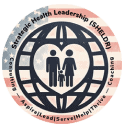Could your bylaws survive a regulator’s dawn raid?
Expose your AI Governance weak spots before your fortress burns down!
Table of Contents
Executive Summary
This article shatters illusions and delusions of conquest: AI isn’t futuristic; it’s already judging your people. Without named oversight, fierce bylaws, and battle-ready contingency plans, your leadership risks disgrace, regulatory assault, and shattered trust. Act now or watch your governance collapse under public scrutiny. To learn more, use hyperlinks, questions, learning activities, and references.
Expose The AI Threat Inside Your Gates
Let’s slice through illusions like those of the Game of Thrones, with Valyrian steel. You’re not here to bask in another pretty promise that AI will “transform healthcare.” That horn has already sounded. AI is inside your walls—quietly rendering judgments in your hospitals, mental health clinics, county agencies, and family services offices.
These are no longer harmless scribes. They’re shadowy advisors, like those in the attachment whispering in your throne room, scoring which Medicaid families face extra scrutiny, sifting through your patient scrolls to mark who’s likely to suffer sepsis or fall prey to despair. They’re predicting which communities will drain your coffers next quarter.
Still treating this like a traveling magician’s trick? Then here’s your grim reality: you’re ruling over a kingdom with no guards on the gates, no watch on the ramparts, no contingency when the torches start gathering outside. One algorithmic misfire, and you’ll be left to explain your ruin to regulators and villagers alike.
So, ask yourself, ruler to ruler: could you stand on the steps of your keep—facing your board, your community, your angry press—and boldly recite how your governance shields your realm from AI’s darker forces? Or would your tongue stumble? If it’s the latter, your vulnerability is already apparent.
Build Iron Walls Against AI Failures
Look around the other castles. The American Medical Association isn’t sitting idle in its feast halls. They’ve drafted their war banner policies demanding that physicians keep a hand on the reins of AI, backed by edicts calling for federal oversight. The American College of Healthcare Executives (ACHE) recognizes that Artificial Intelligence (AI) has a lot of promise to change how healthcare is delivered and managed. Their stance emphasizes a balanced and responsible approach to using AI, highlighting both the benefits and the moral issues associated with it.
The American Nurses Association isn’t playing court games either. They’re forging doctrines that no soulless calculation replaces human compassion. Nurses are instructed to remain vigilant so they can explain this alchemy to wary patients, as trust is a delicate bridge that can easily be burned.
Meanwhile, the Joint Commission is forging alliances with the Coalition for Health AI, building ironclad certifications and guardrails. The National Academy of Medicine? They’re inscribing a formal Code of Conduct, like a kingdom’s codex of just laws. The Healthcare Information and Management Systems Society (HIMSS) has implemented its global standards on safety and accountability.
It doesn’t stop at your clinical outposts. The American Psychological Association (APA) has established guidelines on transparency, bias, and consent. Social Current emphasizes the need for robust governance in human services—insisting that AI serves as a loyal steward, never a monarch. Coalition for Health AI (CHAI) Coalition for Health AI (CHAI) warns every director: study this force deeply before daring to rebuild your systems around it.
These aren’t polite invitations. They’re marching orders. The scaffolds are up; the gallows are being tested. In months—not years—these guidelines will harden into regulatory law. If you’re still dithering, thinking your fortress is safe, you’re courting a siege you won’t withstand.
Learn From AI Disasters Of Weak Lords
Think your dominion’s too small, your scribes too careful, ever to be caught up in scandal? That’s the same naïve lullaby leaders sang to themselves at MD Anderson before Watson’s wretched prophecy. They hurled their gold—hundreds of millions—at IBM’s AI, expecting miracles. What did they get? An oracle so careless that it prescribed treatments, ignoring basic contraindications.
Their jesters’ court was left with empty coffers and mocking songs—four billion worth of hype turned to ash. See IBM’s Oncology Expert Advisor fails to deliver on promises fairy tail.
Or peer into the national borderlands of Centers for Medicare and Medicaid Services (CMS) Artificial Intelligence (AI) Health Outcomes Challenge. Key Thrones & Daggers Initiatives include:
- WISeR Model: Your kingdom’s new war council tests AI as a swift blade to slash away wasteful claims before fraudsters drain your coffers.
- Medicare Advantage Audits: CMS expands its patrols, sending risk auditors armed with sharper AI steel to root out phantom diagnoses lurking in scrolls.
- AI Health Outcomes Challenge: A royal tournament where AI seers proved they could predict which villagers might fall ill, laying the ground for future tribute schemes and care alliances.
Regional Fiefdoms Scramble to Rein In Rogue AI Algorithms
Several states unleashed opaque AI inquisitors to sniff out fraud, only to find that they’d accused countless honest providers, many of whom served impoverished, diverse communities. Those regimes are now frantically rewriting contracts and standing shame-faced before angry villagers and scribes.
Picture a fractured realm where each kingdom sharpens its own decree scrolls to tame AI’s reach in healthcare. California’s lords demand human oversight on utilization decisions and force heralds to reveal when generative AI whispers clinical advice. Colorado posts sentries under its AI Act, guarding against biased prophecies and ordering audits of these shadowy tools. Utah commands open banners about AI dealings, eyeing mental health chatbots warily.
Texas forbids AI from carrying out sinister plots of discrimination and compels healers to confess AI’s hand. Illinois debates forging seals of certification for diagnostic AI, perhaps handing the Insurance Guild power to police insurers’ arcane calculations.
Meanwhile, New York’s council weighs scripts requiring AI judgments on patient care to be rooted in real histories, not cold generalities, and to be plainly declared. Across these lands, governors race to build bulwarks before rogue algorithms slip past the gates.
And your guards? They’re exhausted. They’ll seize any enchanted tool that promises relief, without constantly questioning its fairness or hidden flaws. That’s on you. You can’t escape either. The European Union (EU) has responded to these challenges by enacting a new regulatory framework specifically for AI. Governance isn’t a tedious court exercise—it’s the difference between a stronghold and a smoking ruin.
Forge Bylaws and Guidance to Survive Any Siege
Too many lords and ladies still believe buying from a famous vendor is enough to keep the wolves at bay. It isn’t. When your AI seer fails—when it mistakenly drives a patient to early discharge, or misses looming suicide risk in a disadvantaged family—the liability plants itself squarely on your throne.
Will your contract’s fine print truly shield you? Maybe. But your local council, your skeptical press, your royal inspectors—they’ll march straight past the vendor’s promises and demand your governance scrolls.
Where are your decrees on drift? Who ordered the bias audits? How often are your algorithms retrained and tested against local truths? Can your bylaws prove that your clinicians or social workers wield the final say on every AI whisper?
If your only reply is, “We trust our vendor,” then sharpen your quill—because soon you’ll be signing apologies broadcast to every corner of your realm. Sounds like you have not considered any best practices, leaving you and your team to a siege of lawsuits and media inquiries.
Name Guardians Or Fall To AI Chaos
Across the realm, an AI survey confirms AI surges are like a new breed of dragon—86% of healthcare keeps already wield its power, with global treasure vaults eyeing a $120 billion hoard by 2028. From seers that spot cancer’s creeping shadow early to oracles that foresee a patient’s sudden fall, AI reshapes every corner of the kingdom.
Ask your inner council this tonight, by the hearth if necessary: Who, by name, owns AI oversight in this kingdom? Not “our compliance sentinels.” Not “the IT guild.” Individuals, sworn by charter.
Yet without ironclad governance, these dragons may scorch the very villages they’re meant to protect. Wise rulers must forge strong codes to harness AI’s might for healing, not ruin. Your board must adopt bylaws that clearly define these duties: who reviews your ethical compacts, who demands bias inspections, who scrutinizes the vendors’ complex operations, and who determines when retraining is necessary.
Your governance must also include contingency strategies, such as having sharp blades. If an AI tool falters or produces suspect prophecies, who has the iron authority to halt it instantly? Who convenes the inquiry? Who rides out to speak to regulators and calms the frightened townsfolk?
These aren’t theoretical musings. They’re your survival map when the torches appear on the hills.
Shield All Lands From Silent AI Harm
You could lead mental health programs or social services, believing in yourselves in a quiet province out of the main line of fire—a dangerous fantasy. The APA has already etched ethical guidance in granite—transparency, informed consent, vigilance against data abuse. Anxiety and Depression Association of America (ADAA) preaches human oversight like a sacred vow. The National Council for Mental Wellbeing forges partnerships with AI vendors, ensuring clinicians are trained and strong frameworks fortify their practices.
Social Current bluntly declares that human services organizations must establish trust through unwavering governance. The APHSA (American Public Human Services Association) urges directors to tear down and rebuild their systems with accountability at the foundation, because patchwork fixes after a scandal are costlier than any initial effort.
So, ask yourself now: do your bylaws explicitly govern AI use in eligibility decisions, benefits assignments, or predictive hunts for families at risk? If not, your clerks and counselors are improvising daily—each decision a potential spark that could ignite your carefully tended reputation.
Regulators Saddle Up, Are You Ready?
Coalitions like CHAI and the Digital Medicine Society (DiMe) aren’t daydreamers—they’re drafting the rulebooks regulators will enforce at sword point. The Joint Commission is already piloting certifications tied to fairness and transparency. CMS is quietly embedding AI oversight into Medicaid audits and continues to sharpen its focus on digital bias with each passing quarter.
Still think waiting is safer? That’s not caution—it’s folly. Because when these frameworks harden into law, your only shield will be the governance records and audit trails you built before the torches arrived.
So, look hard at your current board packets, your dusty policy ledgers, your oversight minutes. Could they withstand a federal review at dawn? If the answer’s no, what precisely are you waiting for—a breach in your walls?
These AI Failures Will Ruin Real Lives
Never forget what’s truly at stake. This isn’t just treasury accounts or reputation in the capital—it’s the lives of your people. Picture a Medicaid mother wrongly flagged by an AI inquisitor as fraudulent, her children cut off from care, only to learn later the algorithm was tainted against her zip code. Or a rural soul struggling with despair, denied follow-up because a model discounted her subtle warning signs. These stories don’t stay confined to dusty castle halls. They flood the town squares, the pamphlets, and the local chronicles.
I’ve seen it firsthand—boards that failed to ask hard questions watched their leaders publicly toppled, their names blackened for years. Some kingdoms never truly recover. The trust of the people, once shattered, is the most challenging thing to rebuild in the realm.
Test Your Knowledge With Brutal Questions
If you want to test the mettle of your inner circle, pose these hard questions at your next council:
- Who exactly—by name—signs off on AI deployment?
- When was the last time we conducted a formal bias audit? Please show us the scroll.
- What bylaws bind our ethics council to oversee AI?
- If CMS, OCR, or regional inspectors arrived at first light, what records would we have to produce?
- When an AI output stinks of error, who has the authority to shut it down immediately?
- Are our patients and communities even aware that we wield these tools? If not, why hide it?
- Are you building an AI Governance Leadership Toolkit? If not, why not?
If these questions leave your stewards squirming, you’ve just uncovered your kingdom’s gravest vulnerabilities.
Lead Boldly Or Watch Your Fortress Fall
AI is already judging who gets care, who’s labeled risky, and who’s left behind. If your bylaws don’t name explicit guardians, if your fortress lacks bias audits, drift checks, and crisis shutoff plans, you’re not governing—you’re gambling. Boards that delayed these defenses now stand disgraced before regulators and furious communities.
This chapter lays bare the bitter truth: governance is your last line of defense before scandal guts your reputation. Review your scrolls, name your champions, train your archers, and test your walls. If CMS, OCR, or the press demands proof at a moment’s notice, will your records demonstrate strength or surrender?
Engage your staff and peers on the discussion questions and learning activities, and check out these articles at the Strategic Health Leadership (SHELDR) website: INSERT LINKS HERE.
AI Fluency: 7 Jaw-Dropping Impacts Empowering Health Leaders
So, ask yourself—are you prepared to lead, or will your tale be whispered as the next ruin of negligent lords? Your people deserve vigilance. Your legacy demands it.
Deep Dive Discussion Questions
- Who, by name, in your organization carries AI oversight authority?
- What evidence shows that your bylaws can repel regulatory assault?
- If bias struck today, who could halt your AI instantly?
- How is frontline staff trained to spot flawed AI prophecies?
- How do you rebuild trust after an AI-driven public disaster?
Professional Development & Learning Activities
- Prepare Your Stronghold: Draw a diagram of the AI decision-making process in your company. Locate any holes.
- Drill for Addressing Bias: Act out an audit by regulators of your most recent AI deployment.
- Assemble Your Armory: This year, prioritize the following five investments in governance.
Videos:
Attachment: Health And Human Services Associations With AI Policies
AI is rewriting the rules across health and human services, pushing leaders to build more innovative policies or risk falling behind. From hospitals and public health agencies to social care and behavioral health, top associations have laid down positions on ethics, transparency, fairness, and oversight. This isn’t academic. It’s the frontline playbook for how AI must be governed, deployed, and kept accountable—before your organization becomes the following cautionary headline.
Healthcare and medical:
- American Medical Association (AMA): Emphasizes the need for physician involvement in the development and implementation of AI technologies, recommends government regulation; adopted policies aimed at ensuring transparency in AI tools.
- American College of Healthcare Executives (ACHE): Recognizes Artificial Intelligence (AI) has a lot of promise to change how healthcare is delivered and managed. Their stance stresses a balanced and responsible approach to using AI, bringing attention to both the benefits and the moral issues that come with it.
- American Nurses Association (ANA): Focuses on the ethical use of AI in nursing practice, emphasizing the importance of nurses maintaining human interaction and relationships, and staying informed to educate patients and families about AI.
- American Hospital Association (AHA): Recognizes AI’s potential to improve value-based care and reduce administrative burden, while also emphasizing the need to build trust and address challenges related to AI implementation. Provides an AI Action Plan.
- Healthcare Information and Management Systems Society (HIMSS): Provides global advocacy, research, and guidance on AI policy through its Global AI Policy Principles, focusing on patient safety, quality of care, accountability, and transparency.
- National Academy of Medicine (NAM): Developed the Artificial Intelligence Code of Conduct (AICC) project, which aims to provide a guiding framework for ensuring AI algorithms are accurate, safe, reliable, and ethical in health and medicine.
- The Joint Commission (JCAHO): Collaborating with the Coalition for Health AI (CHAI) to scale the responsible use of AI in healthcare, providing guidance, tools, and certification to accelerate innovation and mitigate risks.
Public Health:
- Association of Schools and Programs of Public Health (ASPPH): Established a Task Force for the Responsible and Ethical Use of AI in Public Health, focusing on education, research, practice, and policy.
- National Association of County and City Health Officials (NACCHO): While acknowledging the early stages of adoption, NACCHO highlights the interest in AI among public health organizations for tasks such as creating communication materials and plans.
Mental and behavioral health:
- American Psychological Association (APA): Offers ethical guidance for AI in professional practice, including considerations for transparency, informed consent, mitigating bias, data privacy, accuracy, human oversight, and liability.
- Anxiety and Depression Association of America (ADAA): Focuses on integrating AI into mental health practices, exploring opportunities in patient, provider, and payer ecosystems, and emphasizing the importance of ethical considerations and human oversight.
- The National Council for Mental Wellbeing: Partners with companies like Eleos Health to increase clinician access to AI education, research, and provider-centric tools.
Social care and human services:
- Social Current emphasizes building trust, utilizing AI as an assistant, upskilling employees, and implementing AI ethically with robust governance frameworks in human service organizations.
- APHSA (American Public Human Services Association): Views AI as a promising tool to support human efforts and enhance human services, while stressing the need for a deep understanding of current technology and principles for re-engineering systems.
Cross-sector/general AI in health:
- Coalition for Health AI (CHAI): An interdisciplinary group (including technologists, academic researchers, health systems, government, and patient advocates) focused on developing guidelines and guardrails for trustworthy health AI systems.
- Digital Medicine Society (DiMe): Develops guidelines for the use of AI in healthcare.
- Partnership on AI: Brings together people from different backgrounds to talk about the problems and opportunities that AI presents.
- Several organizations and associations are dedicated to the fields of Artificial Intelligence (AI) and Optical Character Recognition (OCR), either individually or at their intersection
This list includes some of the most influential groups currently shaping the discussion and regulations surrounding AI in healthcare and human services. We need to keep in mind that this area is constantly evolving, with new groups and regulations emerging all the time.
Leading health, public health, social care, and behavioral organizations now enforce explicit AI policies on ethics, transparency, and human oversight. Their frameworks are shaping national norms. Ignore them, and your organization risks compliance failures and public backlash. Master them, and you lead with integrity, trust, and sharper outcomes.




